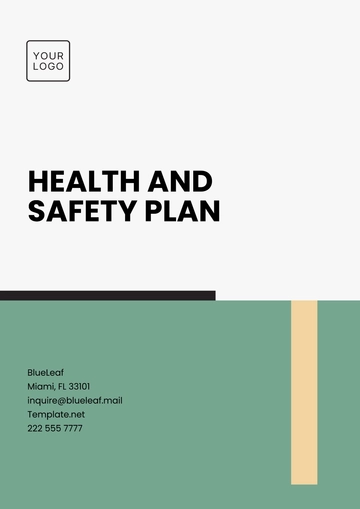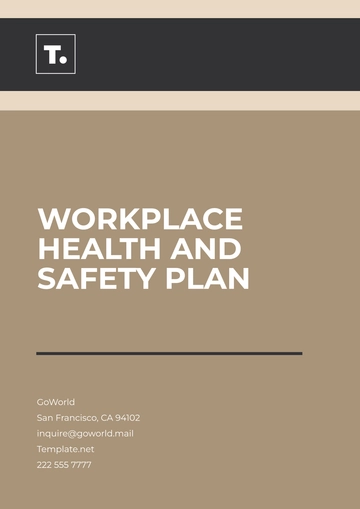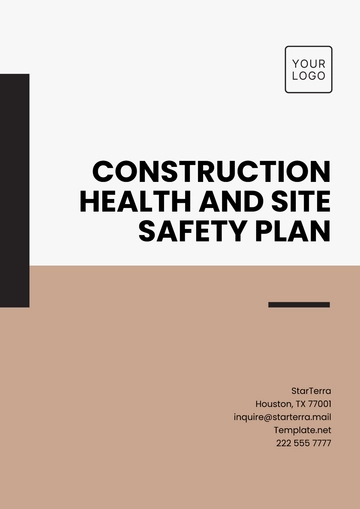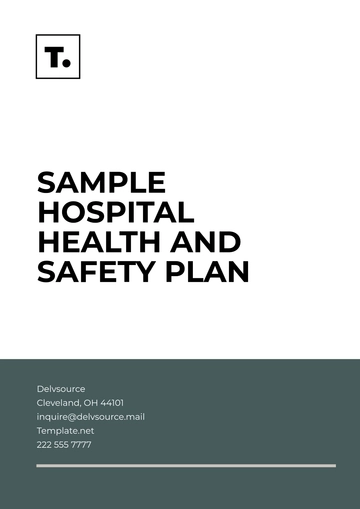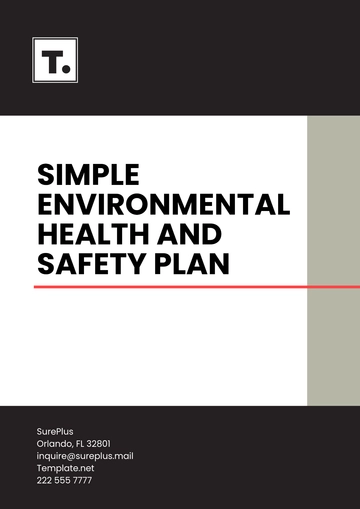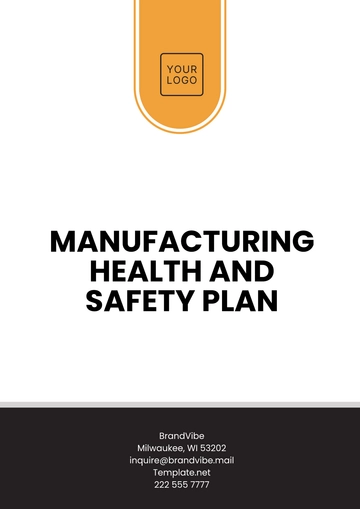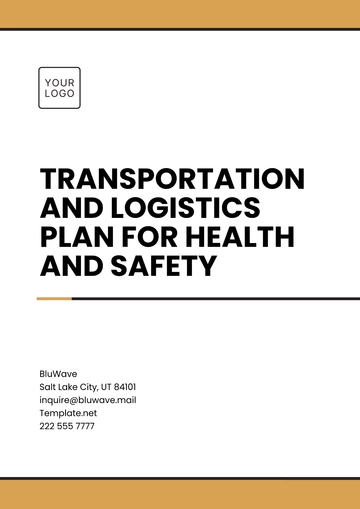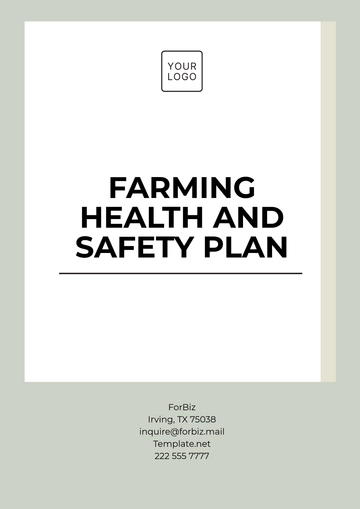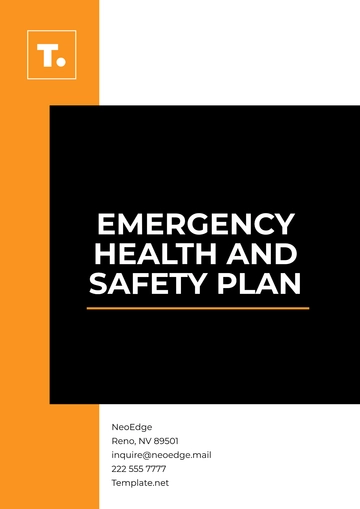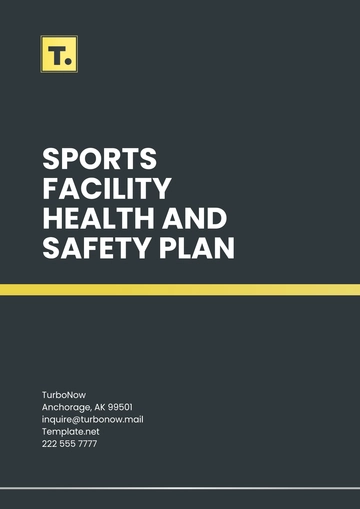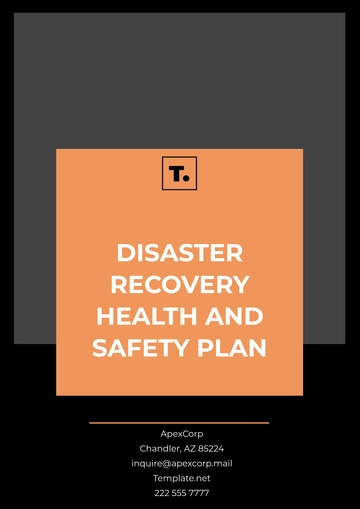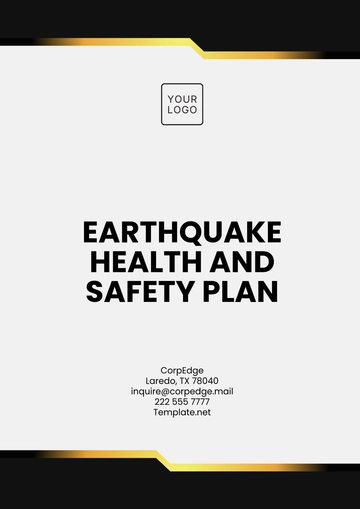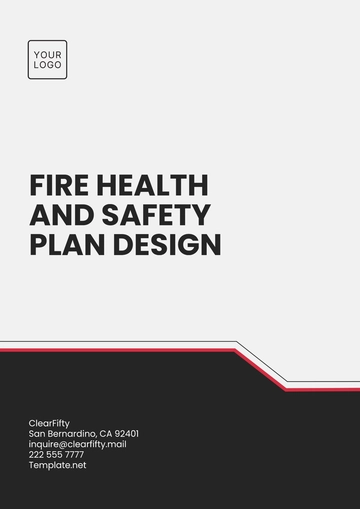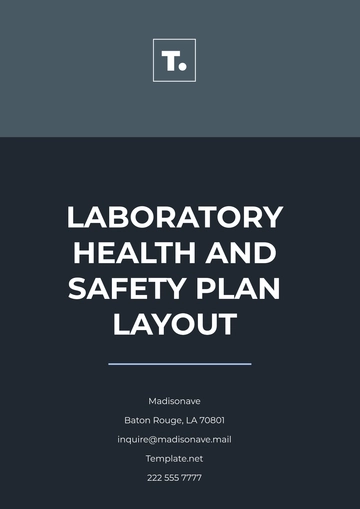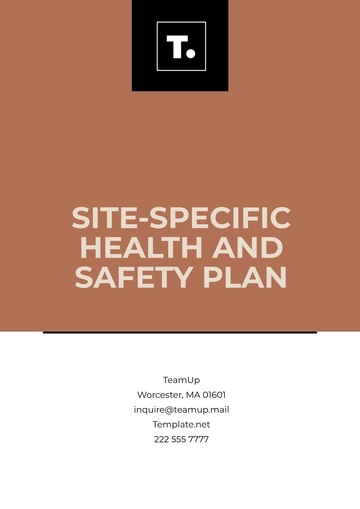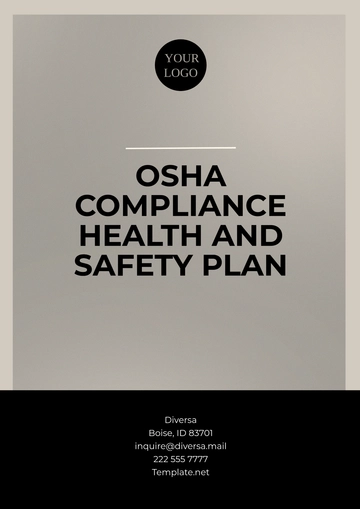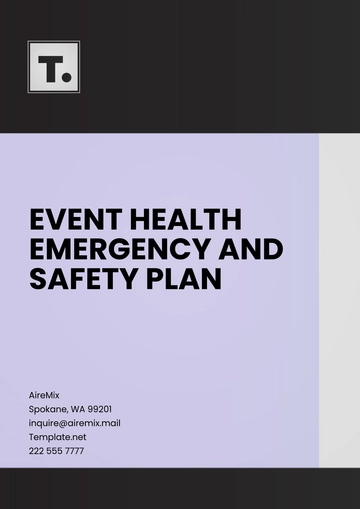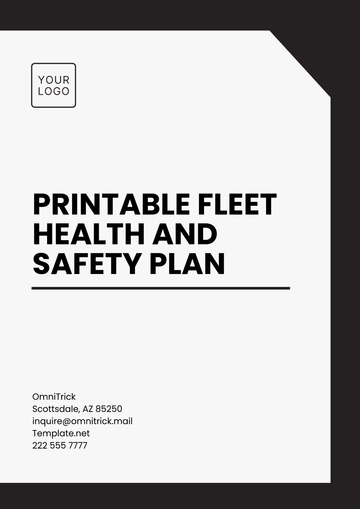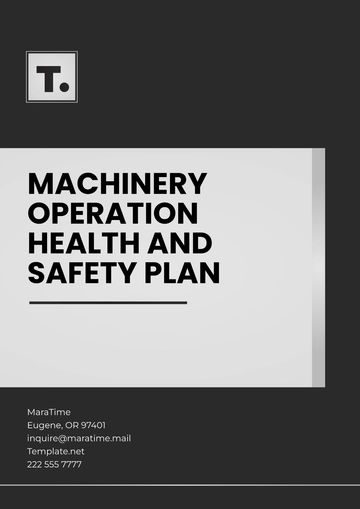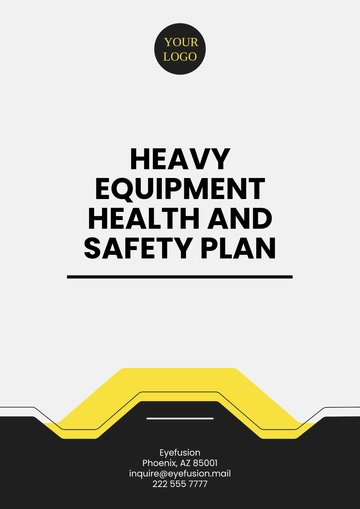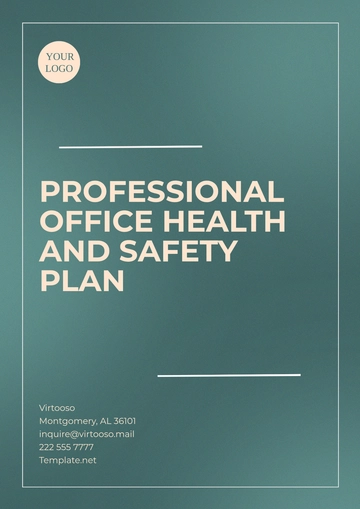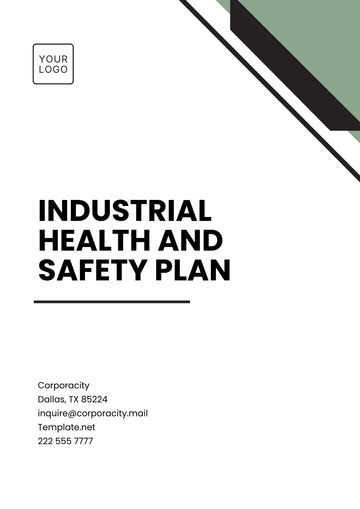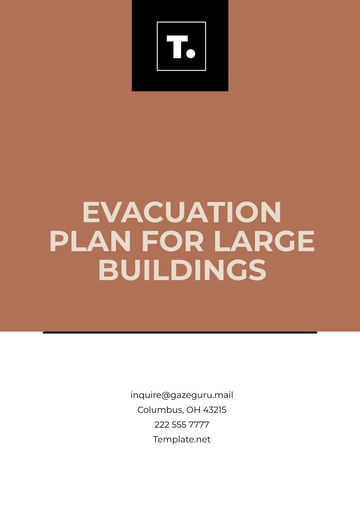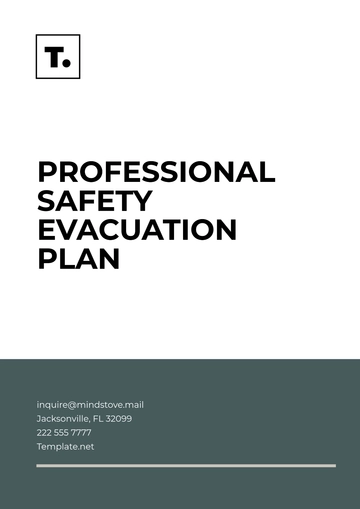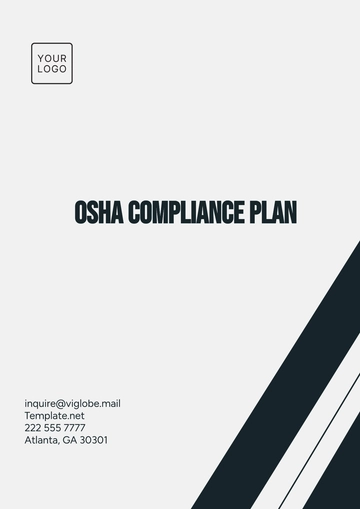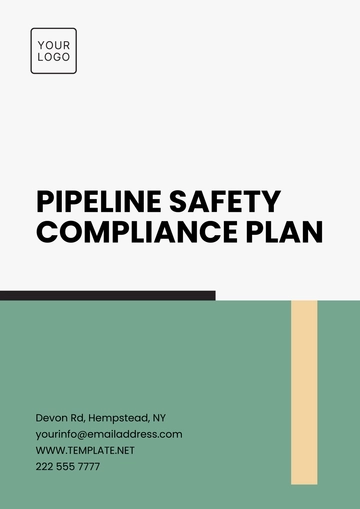Workplace Fall Protection Plan
This plan outlines measures to prevent falls, protect employees, and ensure a secure work environment. Applicable to every individual within [Your Company], the plan adheres to all relevant local, regional, and national regulations, underscoring our dedication to legal compliance.
I. Responsibilities
Role | Responsibilities |
Management | Responsible for providing resources, support, and oversight. |
Health and Safety Professionals | Lead the development, implementation, and monitoring of the fall protection plan. |
Supervisors | Ensure that fall protection measures are implemented and followed in their respective areas. |
Employees | Comply with safety guidelines and report any hazards promptly. |
II. Risk Assessment
A. Identification of Fall Hazards:
Work Areas: Detailed assessments of all work areas conducted.
Tasks: Evaluation of tasks involving elevation.
Equipment: Inspection of all equipment used at heights.
B. Evaluation of Severity and Likelihood:
Quantitative and qualitative assessment of identified hazards to determine potential risks.
C. Prioritization of Control Measures:
Establishment of priorities for implementing control measures based on risk assessments.
III. Hierarchy of Controls
A. Elimination and Substitution:
Implementation of alternative methods or equipment to eliminate or reduce fall hazards.
B. Engineering Controls:
Installation of guardrails, safety nets, and other engineered solutions.
C. Administrative Controls:
Development of strict procedures and guidelines for working at heights.
D. Personal Protective Equipment (PPE):
Provision and proper use of PPE, including harnesses and fall arrest systems.
IV. Fall Prevention Measures
A. Guardrails and Barriers:
Installation and maintenance of guardrails and barriers in elevated areas.
B. Scaffolding Safety:
Adherence to strict scaffolding safety guidelines, including regular inspections.
C. Ladder Safety:
Implementation of ladder safety protocols and regular training for employees.
D. Fall Arrest Systems:
Proper use of fall arrest systems, including training and equipment inspections.
E. Safety Nets:
Installation and maintenance of safety nets in areas with elevated fall risks.
F. Controlled Access Zones:
Establishment of controlled access zones in hazardous areas.
V. Work Procedures
[Your Company] prioritizes safety in tasks at heights. Employees adhere to stringent work procedures to minimize fall risks, including proper use of personal protective equipment and maintaining organized workspaces. Thorough equipment inspections are routine, ensuring the reliability of harnesses, lanyards, and scaffolding.
Emergency response and rescue plans are in place, outlining swift actions in the event of a fall. Transparent reporting and investigation of incidents are integral, with employees promptly reporting any concerns. The focus is on continuous improvement to enhance overall workplace safety, emphasizing prevention through comprehensive training and clear communication of safety procedures.
VI. Training and Education
Employees at [Your Company] undergo comprehensive training programs on fall hazards and prevention measures. Specialized training for supervisors and managers emphasizes oversight and enforcement of fall protection.
Regular refresher courses ensure continuous awareness and compliance. All training sessions are meticulously documented for reference and audit purposes.
VII. Communication
Clear signage indicates areas with fall hazards, fostering a safer workplace. Established channels disseminate safety information to all employees, promoting awareness. Regular toolbox talks and safety meetings facilitate open communication, addressing concerns and promoting a proactive safety culture.
VIII. Documentation and Recordkeeping
[Your Company] maintains systematic records of risk assessments, inspections, and incident reports. Thorough documentation of all fall-related incidents and investigations ensures a detailed understanding of each case. Equipment inspections and work area assessments are meticulously recorded to track compliance and identify areas for improvement.
XI. Evaluation and Review
Scheduled audits assess the effectiveness of the fall protection plan, ensuring ongoing relevance and compliance. Continuous evaluation involves feedback and incident analysis, driving improvements. Regular reviews and audits allow for adaptability to evolving workplace conditions, technology, and safety standards.
X. Legal Compliance
[Your Company] maintains ongoing compliance with all relevant local, regional, and national occupational health and safety regulations. Periodic legal compliance audits identify and rectify any non-compliance issues promptly, ensuring adherence to the latest legal requirements.
XI. Contacts and Resources
Emergency contacts are readily available for quick reference in case of fall-related emergencies. Information on external resources and support for fall protection provides additional assistance and expertise when needed.
By fostering a culture of safety, this plan aims to mitigate fall hazards, prevent injuries, and ensure a secure working environment for all, reflecting our unwavering commitment to employee well-being
Health & Safety Templates @ Template.net

